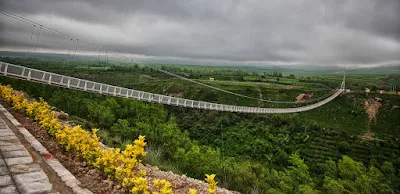For some ancient cultures, bathing was a necessity. For Iranian,
not only were baths important for maintaining health, they were also an important
part of social life. Iran public bath houses were centers for socialization and
in some areas, were quite large and lavish indeed.
The Sultan Amir Ahmad
Bathhouse in Kashan, Iran, is a 16th century public bathhouse built during the
time of the Safavid era but was damaged in an earthquake in the 1770s and later
renovated during the Qajar period. Characterized by vaulted ceilings, exquisite
mosaics and paintings, this gorgeous structure is one of the most beautiful and
best preserved historic bathhouse in Iran today. The bath is decorated with
amazing ornamental tiles, some of which are turquoise and gold. The bathhouse
has the shape of a large octagonal hall with an octagonal pool in the middle,
and surrounded by eight pillars separating its outer sitting area. The roof of the bathhouse is made of multiple
domes that contain convex glasses to provide sufficient lighting to the
bathhouse while concealing it from the outside. Serves as a museum and declared
a national heritage site by Iran’s Cultural Heritage Department in 1956, the
bathhouse is named after Imamzadeh Sultan Amir Ahmad, whose mausoleum is nearby.
While travelling in Kashan, besides visiting historical houses and Fin garden, Uppersia
recommends you to explore this less-known ancient monument.
 |
| Sultan Amir Ahmad Bathhouse in Kashan, Iran |




